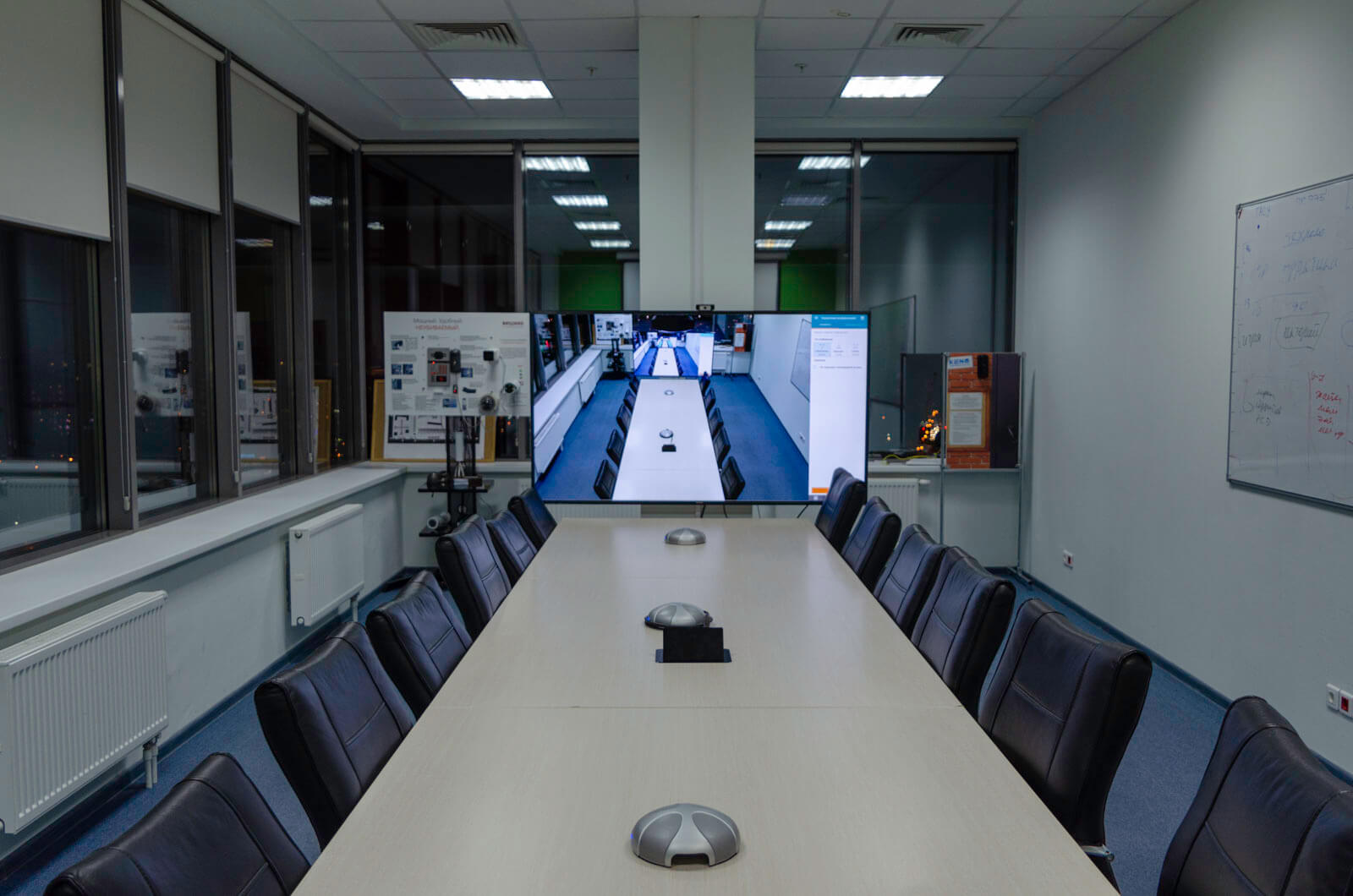![]()
There are a variety of different types of conferencing technology that can be used in order to communicate with a group of people. The most common types of conferencing technology include video conferencing, audio conferencing, and web conferencing.
Video conferencing is a communication technology that connects two or more users wherever they are located. With video conferencing, people can communicate using integrated audio and video and collaborate on shared files and documents.
Audio conferencing is a technology that allows people to communicate with each other using only their voices. This technology is often used for business or personal purposes.
Web conferencing is a technology that allows people to communicate with each other using their computers. This technology is often used for business or educational purposes.
To organize a video meeting, all you need is a webcam, microphone, monitor or other video and audio display device. An ordinary PC with connected audio/video devices is excellent for this process.
Video Conferencing Modes
Point-to-Point (P2P) Video Conferencing
Point-to-point mode connects two users so they can view and hear each other, exchange links and files, and work on documents together from different locations in a comfortable environment. This type of conferencing provides a clearer signal and minimizes lag time because it does not require a bridge or other sophisticated system to synchronize the two signals.
Multi-Point Video Conferencing
With this type of video conference, all participants have the same conditions and rights (everyone can see and hear each other). In many cases, the maximum number of participants in a multipoint conference exceeds 25 users, but a lot also depends on the software used.
Multipoint conferences are divided into centralized conferences (uses MCU) and decentralized conferences (does not use MCU).
The technology works as follows. Upon gathering primary video streams from all the endpoints, the server separately performs the following actions for each endpoint:
- Combines thumbnail videos of the participants in a single video stream with the layout requested by the endpoint.
- Encodes the video stream up to the quality that meets bandwidth from the MCU to the specific endpoint at the given moment.
- Sends a video stream to the endpoint.
Role-Based Video Conferencing (virtual meeting)
This mode allows only certain participants to be viewed and heard by other users. Participants are usually divided into moderators, presenters, and passive attendees. For a role-based conference, the maximum size is usually about 1,000 users, but these details should be verified with the vendor.
Video Conferencing Types
Depending on the purposes and objectives of videoconferencing, there are the following types:
1.Telepresence Video Conferencing

A teleconference is a video meeting for a large number of users united by a common topic or issue. Messages in teleconference mode can be exchanged in real time, through various audio and/or video communication systems, as well as through email clients.
2.Desktop Video Conferencing Technology
Many organizations widely use desktop conferencing because this technology eliminates the need to use bulky professional equipment or rent conference rooms. Video conferences can be run from desktops or laptops with built-in cameras, speakers and microphones.

3.Room-Based Video Conferencing Technology
Room-based technology is typically a hardware solution that is installed and configured in conference rooms. For successful work in small and medium-sized conference rooms, this technology is equipped with sensitive microphones and wide-angle PTZ cameras.
4.Multiway Technology
This technology is particularly useful for businesses that want to consolidate their offices in different locations. Multiway technology allows multiple video conferencing software systems to be used simultaneously. A user who calls from a multiway endpoint can use the MCU network resource for the call.
5.Codec
Codec is a technology for compressing video to a size suitable for streaming while discarding unnecessary data. Video is shrunk for storage and transmission and then unpacked for viewing. This technology allows you to turn a browser into a video conferencing terminal.
6.Integrated Video Conferencing
Integrated video conferencing systems are the most functionally advanced as they support the maximum number of additional functions, including multipoint video conferencing, operation in heterogeneous (IP-ISDN) environments, image transmission from multiple sources and many others. Difficult to configure, they require preliminary design.
7.Data sharing
This video conferencing technology provides high collaboration capabilities, such as document sharing, live session recordings, video downloads, etc. The ability to easily exchange data and discuss plans and strategies in such a quick way improves the way companies do business.
Video conferencing use cases
Video conferencing technology can be applied to a variety of vertical industries, such as distance education, telemedicine, finance and banking, etc. to hold seminars, training guide, webinars or to facilitate day-to-day communications.
Government
Video conferencing development cost plays a pivotal role in enabling government and public sector agencies to broaden the reach of their programs and services while fostering collaboration among departments, employees, and suppliers. This cost-effective communication tool finds extensive utility in emergency situations, being widely adopted by the army, police, and various law enforcement units, especially during times of both man-made and natural disasters.
Telemedicine
Telemedicine is the use of electronic, information and communication technologies to provide and receive medical services. One of the main objectives of this area is to ensure that patients, medical specialists, or institutions geographically distant from one another can work together over any distance, without compromising the quality and level of interaction. To solve these problems, video conferencing is actively used, raising healthcare to a qualitatively different technological level.
Education
Video conferencing brings distance education to a new level, as close as possible to face-to-face learning. The teacher can not only give a lecture, but also show additional materials illustrating it. Students, in their turn, will be able to ask questions on the studied material. In addition, videoconferencing is very convenient for remote personnel training, because the specialist does not have to travel every time to a new group of trainees.Also, for students seeking additional support in crafting their assignments, exploring a reputable essay writing service can be beneficial. Edubirdie allows students to directly participate in classes without being distracted from completing assignments.
Banking Solutions
Video conferencing allows financial institutions to maintain personalized interaction with customers, improves customer service and expands reach while reducing costly investments in the company. Using video conferencing, investment banks are able to exchange information about market shares,currencies and other time-sensitive information with peers around the world.
Enterprise
Video conferencing encourages and supports learning, collaboration and communication and brings company leaders into the room with their teams and employees regardless of location. The best video conferencing services allow employees to share screens, communicate via text messages, share files and even stream conferences to large groups of passive viewers. Using this type of communication significantly reduces travel expenses, improves collaboration and ensures business data security.
HR & Recruitment
Video conferencing technology can be used by human resources departments for the hiring process of potential employees. Video conferencing interviews save time and money while providing a similar, if not better, experience than a face-to-face meeting. As remote work continues to gain traction, leveraging video conferencing for remote interviews will become increasingly essential for businesses looking to stay competitive in attracting top talent. Human resource and hiring managers meeting with potential candidates get a live, real-time experience where they can read the candidate’s body language and demeanor.

